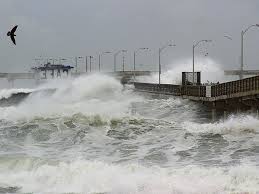 El Nino is a weather event that changes precipitation and temperature patterns across the globe. It has more impact in some areas than others, so understanding how El Nino affects your particular region is important to being able to guide your customers in plant and landscape care. Here are ten tips for you to share with your customers about this interesting weather event.
El Nino is a weather event that changes precipitation and temperature patterns across the globe. It has more impact in some areas than others, so understanding how El Nino affects your particular region is important to being able to guide your customers in plant and landscape care. Here are ten tips for you to share with your customers about this interesting weather event.
1. El Nino Affects Precipitation
The biggest effect that El Nino has on the U.S. is on rain and snow patterns. During El Nino years, the Northwest and Northeast experience far less rain than usual while Southwest and Midwest see huge increases in rainfall. Central states like Texas and Oklahoma often see extreme flooding during El Nino years.
2. It Does Not Guarantee Rain
Californians, in particular, are excited by El Nino events because they bring rain to a region that has cyclical droughts. Strong El Nino events can bring rain to the entire state, but weak events can leave the northern part of California drier than in regular years. Listen to what meteorologists say about the strength of an El Nino event so that you can properly advise clients and dispel common myths.
3. It Is Temporary
The heavy rainfall events that El Nino brings to some regions can tempt people to plant non-native plants or vegetation that won’t survive a drought. The lack of rain in other regions can push inhabitants to dig up plants or panic because their water bills are spiking. Reassure both customers that even though things seem bad, they will generally return to normal after a year.
4.It Should Delay Certain Jobs
El Nino shouldn’t be seen as an inconvenience to work through, it should be seen as an event that adjust your work plans for an entire season at least. There is no use planting things that won’t survive the floods or relative drought. Explain to customers that they will get better results and save money by waiting to install certain plants until they can establish themselves.
5.Soil Erosion Increases
Soil erosion increases during El Nino events. You can prepare soil for excess water by adding compost, mulch, or straw. Planting an annual cover crop may be a good idea for both wet and dry areas to prevent soil erosion.
6. Temperatures Change Dramatically
When El Nino strikes, the northern part of the U.S. usually experiences warmer winters while the south and southwest regions get colder. El Nino literally changes plant hardiness zones for a short period, so you need to alert customers with sensitive plants that they will need to cover them or expect changes in flower production, fruit yield, and more.
7.La Nina May Follow
More often than not (though not always) La Nina follows El Nino. La Nina events generally cause the opposite effects of El Nino, brining mild temperatures and less rainfall to the southwest United States and cold, snowy winters to the Northeast. La Nina can also boost hurricane strength and frequency for the Southeast.
8.Submerged Vegetables May Be Inedible
Rain water is fine for gardens, even if it is heavy. Floods, however, can make produce dangerous to consume because man-made and natural contaminants inundate plants. Warn your customers that flooded crops are not always safe to eat and that flood-borne contaminants are not always easy to wash off.
9.Pests Thrive
Most insect pests like moist conditions. When El Nino changes weather patterns, people should be aware, that ants, termites, and plant-eating pest populations usually surge. Areas that see the most problems with pests due to El Nino are the southern and western regions, particularly those with normally dry weather.
10.Wind
Under El Nino conditions, some wind patterns actually reverse directions. This can have serious impact on trees and other tall plants that are used to the wind blowing in a different direction. It can also bring in new pests, particularly fungi, that aren’t normally a problem for a particular region.
Forewarned Is Forearmed
Meteorologists have gotten much better at predicting El Nino and La Nina events, which allows for better preparation. Changes in temperature and precipitation patterns can wreak havoc on gardens and landscapes, but knowing that they are coming can help your customers mitigate the damage. Keep an eye on these cyclical weather events so that you can be ready to serve your customers and help them protect their landscape investments.
Resources
https://www.kcet.org
http://www.accuweather.com
